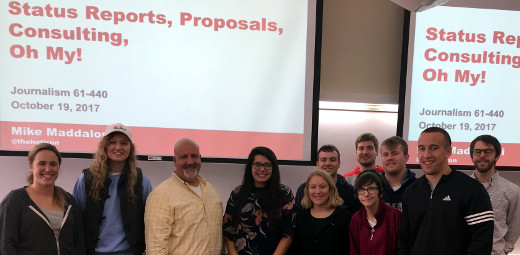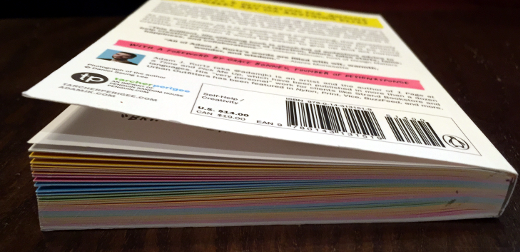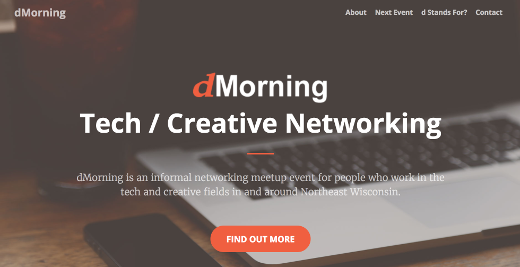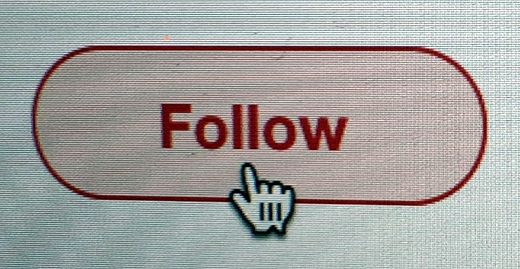My Takeaways From The Book Things Are What You Make Of Them
There are no shortage of books, blogs and articles out there offering career advice. In fact, you are reading something from one of them right now! If anything, they all have something in common – long narratives, loaded with stories and real-life examples, explaining in great detail the author’s point-of-view.
The new book, Things Are What You Make of Them – Life Advice for Creatives by Adam J. Kurtz, is a book that, as you can guess by the title, is in the above-mentioned genre, but its format and structures breaks the above-mentioned mold. Where it offers career advice, its format is unique – there are just over a dozen “chapters” – each beginning with a description, then a hand-written list of 8 points, followed by 8 pages, also hand-written, corresponding to each point on pages no more than 4 inches by 6 inches.
As I said, this book is unique, and refreshing. The advice is written with a mix of Kurtz’s sense of humor and his brutal honesty. It’s a short read, which you can finish in less than an hour, but gives you a lot to think about for a long time and easy to remember – each page has a colored border by chapter, and all pages are perforated for easy removal and hanging up in a prominent place.
As you can guess, this book gave many things to takeaway from it.
Define creative – As the book’s subtitle is “Life Advice for Creatives,” some of you reading this may think, this book is not for me as I am not “creative” in the sense of a designer or artist, as the author is. To borrow a phrase, bollocks! Many of us, where we may be in a corporate job that is not defined with words such as “artistic” are actually creative in nature – we are using our brains and imagination to find creative solutions for our employers or clients. To borrow another phrase, this one by from Kurtz’s own definition of “creative” in the book, it is “… a person who defines themselves, in some way, by their creative passion or profession.” I love this description and feel it suits myself, and it may suit you as well – think about it.
Take away what works for you, literally – In any book, you can find yourself liking and disliking various parts of it. This is in fact why I write takeaways from books rather than reviews of them. With this book if something resonates with you, you can then literally and easily remove it as all pages of the book are perforated, then post it someplace as a reminder or inspiration.
More books are needed in this format – From its small size to its vibrant colors to perforated pages to its concise advice, more books should be crafted this way. It reminds me of the book 52 Motivational Quotations for Salespeople by my good friend Tom Cruz, which has each quote on a separate page so they can be removed and displayed prominently. Especially in our fast-paced digital world, it allows us to take a brief time out, read and reflect.
When I heard about Things Are What You Make of Them, I preordered it right away. I learn about Kurtz and his creative work from his book 1 Page at a Time, which I bought and am still using as an (almost) daily creative outlet. His light-hearted approach has drawn me to his work, and it makes me smile and think at the same time.
After finishing this book, I decided to give it to someone who is a very creative person, and am eager to hear their thoughts on it as they read through it.
This is from The Hot Iron, a journal on business and technology by Mike Maddaloni.
Did you enjoy this? Subscribe to The Hot Iron by RSS/XML feed or Read by Email.
Book Take-Aways • Thrive • (0) Comments • Permalink
Announcing dMorning Tech Creative Networking In Northeast Wisconsin
With great anticipation I am pleased to announce a networking event for people who work in the tech and creative fields in Northeast Wisconsin. Introducing dMorning.
So what is dMorning?
The idea behind dMorning is relatively simple - informal networking before the busy workday starts, with no set rules and no agenda. Since I moved to the Fox Valley of Wisconsin this past summer, I have been looking for something like this, as I work in the Web and I am looking to meet people who work in similar fields in my new home area.
In the past I have hosted a variety of meetups where I used to live in Chicago – some specific and some general – and I have found the latter to be more interesting. A casual gathering of people to talk about what they are working on, sharing stories and bouncing ideas off each other… this is something I have wanted to restart for a while, and why not here? My plan is for this to be a monthly event.
The first dMorning will be on Friday, November 17 at 7:30 am at All Seasons Coffeehouse in Appleton, which is conveniently located off I-41 at Wisconsin Avenue. I only say it goes until 9:30 am as that is likely as long as I will be there. There is no cost for dMorning, you only have to pay for any beverages or food you purchase from this locally-owned business.
What’s in a name?
You may be wondering about the name, dMorning. As I sought out a name for this, I didn’t want to pick something limiting. On the Web site at dMorning.com there are some ideas of what the “d” could stand for.
Hope to see you there!
This is from The Hot Iron, a journal on business and technology by Mike Maddaloni.
Did you enjoy this? Subscribe to The Hot Iron by RSS/XML feed or Read by Email.
Announcements • Business • Mobile Technology • Technology • Thrive • Web Design • Web Development • (0) Comments • Permalink
My Guest Lecture On Consulting at University of Wisconsin – Oshkosh

Last week I had the honor to guest lecture to students at the University of Wisconsin – Oshkosh (UWO) on the topic of consulting. As the students are working on group projects where they consult to organizations on the Web and social media, I was thrilled to be asked to share my experiences, stories and advice on consulting and working in technology.
The class, Application of New & Emerging Media, is taught by Dr. Sara Steffes Hansen, associate professor and chair of the Department of Journalism at UWO. The class is a required course for the Interactive Web Management (IWM) major, and also part of the curriculum for journalism and public relations majors. The interdisciplinary IWM program combines journalism, business and computer science courses to prepare students for digital careers, where all of these skills are vital.
With 10 students in the class, it was a good setting to talk on this topic of consulting, as well as the upcoming deliverables for their project, including an interim status report and a proposal to the client at the conclusion of the semester. I talked about the commonly-accepted description and roles of consulting, my take on it, as well as real-life examples (with client names properly masked) of positive and not-so-positive experiences throughout my career which spans now a quarter-century. As nobody nodded-off in class and the questions posed by the students were of a high caliber, I am hoping they got as much out of the time as I did.
Dr. Hansen said the students handed in their status reports this week, and discussed the aspects of customer service and risk. She added, "the students applied those real-world examples and consulting essentials from your presentation to their own communication efforts with clients. They could articulate the management of risk for the unknowns in their projects, which is a part of any Web, eCommerce or social media endeavor. It was nice to see the students enjoy their consulting roles in this discussion."
This is the second time I have given a guest lecture in one of Dr. Hansen’s classes. Two years ago I spoke to her class, incidentally a pre-requisite of this one, on the topic of blogging. Where the last time I remotely spoke to the students using the Personify technology and a 3D Web camera, this time I was in person in the classroom, the method I prefer much better.
I have posted the slides from the lecture on SlideShare, and you can view them embedded below or view them at this link on SlideShare’s site. On slide 11, I selected 3 famous people to help describe proposals – can you guess why I chose them?
(photo credit – Dr. Sara Steffes Hansen)
This is from The Hot Iron, a journal on business and technology by Mike Maddaloni.
Did you enjoy this? Subscribe to The Hot Iron by RSS/XML feed or Read by Email.
Announcements • Business • Strategize • Technology • (2) Comments • Permalink
Expand Your Twitter Followers In 3 Steps
Whether you are new to Twitter or have been using it for years, having a list of followers has always been, and continues to be, important to the social network. Where all public tweets are readable by all, most people engage with those who they follow and who follow them. This engagement makes using Twitter worthwhile.
Like with anything, quality engagement is better than quantity engagement. This is measured directly by likes and retweets of what you post, as well as replies and conversations with others. Indirectly, it can be measured in traffic to your Web site and offline in, for example, new customers or increased sales.
People often asked me, how do you get followers? “Getting” followers – real human beings, that is – is a process, as ideally you want people to want to follow you. In some cases though, people may simply not be aware of who you are. This is why I present these 3 steps to expand your base of followers. Of course, there are no guarantees your list of followers will balloon overnight, but these are geared towards getting people’s attention to you.
1. Decide who you would like to follow you – This offline strategizing is you thinking about who you would like to follow you. For people who have businesses or are in business, they will relate to this as it is similar to who their target audience or customer or other demographic information is. For some, that is a great place to start, and for others it can be who you would like to read your blog or those who work in the same industry as you.
Write this down – your target followers. Keep this by you as you go through the following steps.
2. Follow those who you want to follow you – Now that you have defined who, look for them, and follow them. Many times when people think of social media engagement, they purely look at it from their own vantage point. However, take a 360-degree approach – would the people who you want to follow you actually want to?
By following them, you are expressing interest in them, and in most cases, letting them know who you are. The hope is they will see you following them, look at your profile and what you have tweeted, and then follow you back.
So how do you find them? By searching – either for specific people or terms, words hashtags – for whatever ways you can think of to find people, businesses, organizations, whomever that you want to follow, and to follow you back.
3. Follow those who follow those you want to follow you – Apologies for the mouthful there… as you are targeting people to follow, why not check out who they follow as well as who follows them? This is a great wat to expand the scope beyond merely searching, as many times potential targets for your following may not come up in a search for a variety of reasons, including their profile not matching what you have been searching on.
Everything in moderation
One consideration to make when you follow people is there are limits imposed by Twitter to the number of people you can follow, and you can read more on these limits on Twitter’s help site. To start, you can follow up to 5,000 people. After that, you need to have more followers in order to follow more that that number. There is a ratio to this, though Twitter does not specifically disclose it. Of course if you hit the limit but want to follow others, you can always unfollow accounts to make room.
Deconstructing Twitter Followers
Wouldn’t it be great to have tons of Twitter followers? But if you think of it from the point-of-view of real life, it’s a similar approach to friends in real life – they are relationships you establish and maintain. Sometimes you are the one initiating it, and this is where following others you want to follow you comes into play.
This is from The Hot Iron, a journal on business and technology by Mike Maddaloni.
Did you enjoy this? Subscribe to The Hot Iron by RSS/XML feed or Read by Email.
Build • Social Media • Strategize • Thrive • (0) Comments • Permalink
3 Tips On Sharing Content For Reluctant Twitter Users
I’ve encountered a recent phenomenon of people who are new to using Twitter. Some are businesspeople who feel they need to use it but don’t quite embrace it. Some are employees of companies who are asked to share content on behalf of the company but don’t use it for much else. Then there are others who have been told they should be using it but are not comfortable as compared to other social media platforms.
These people are what I consider “reluctant” Twitter users. I’d like to offer them – and everyone else – some straightforward strategies to gain familiarity and comfort with this social network.
Let’s start with simply sharing content from others. When it comes to sharing content on Twitter, I offer 3 tips to help you through the process. But first, let’s define what “sharing” is. It is the process of posting, or tweeting, information you want to inform others of. It could just be the text of a tweet, a link to a Web page, a picture, or a combination of all of these.
These tips are:
1. Identify something of interest to share with others – Where this may be obvious to some of you reading, I know for others it is not. There is no “perfect” content – it can be any of the formats mentioned above.
When you think of who to share with, I am referring to the people who are following you, plus any Twitter users, providing your profile is public. As for the latter, people can search all tweets (known as the public timeline) for any topic they are looking for. They may find one of your tweets, and could like or retweet it, thus sharing it to their followers. So when you see someone you don’t know like something of yours, this extension to your network is why.
2. Use the Tweet button – Now that you have identified what, how do you actually share it? The ideal way is by clicking a button or link which will open up a text box and format a tweet for you. With Twitter now being around for over a decade, most Web sites, news media, blogs, etc. have such a link or button, as well as sharing buttons for other social media platforms (e.g. Facebook, Pinterest).
That being said, there are many sites that do not offer such a button (like here at The Hot Iron). For these, you can simply copy and paste a link into the box when you go into type your tweet. You also can use built-in sharing functions on your Web browser or mobile devices to compose a tweet.
3. Personalize it – Before you press the tweet button, personalize what you sharing. Personalizing allows you to add your point of view, your reason, your whatever to what you share. Personalization can also include the Twitter username of someone to send the tweet to as well as a personal message to them or anyone else reading it. You can also take personalization to the next level by adding keywords or hashtags (keywords preceded by the # symbol) to what you write, as people may be searching Twitter for content with these words.
Like with anything, start someplace and the more you do it, the more comfortable you will be. Following these 3 tips will hopefully make this as easily done as said. The next time you find an article or anything else you want to share on Twitter, try these tips and let me know if they work for you or not.
Deconstructing Tweeting Content
Sharing content is at the core of the term social media – being out there and social by sharing content from a media source. Any new activity takes time – more for some than others – but with practice you will get comfortable. Having some guidelines can help you get over the hump. In time, you will gain a level of savviness with using Twitter.
This is from The Hot Iron, a journal on business and technology by Mike Maddaloni.
Did you enjoy this? Subscribe to The Hot Iron by RSS/XML feed or Read by Email.
Blogging • Business • Social Media • Strategize • (0) Comments • Permalink








